Tremor at Ruapehu volcano now longest and strongest in 20 years, New Zealand
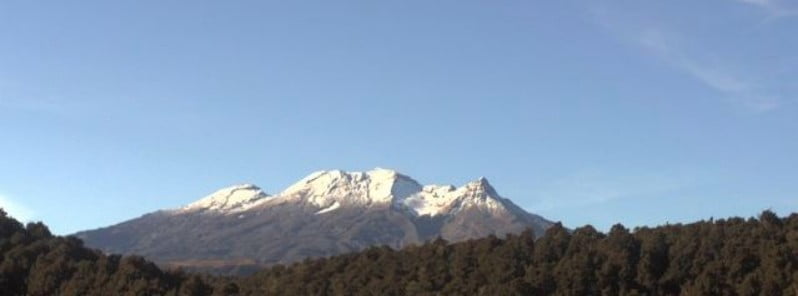
Elevated volcanic unrest continues at New Zealand’s Ruapehu volcano and is dominated by strong volcanic tremor. The Crater Lake (Te Wai ā-moe) temperature remains stable at 37 °C (98.6 °F) and the Volcanic Alert Level remains at Level 2.
Elevated volcanic unrest has now been sustained at New Zealand’s Ruapehu volcano for five consecutive weeks.
This heightened volcanic unrest is primarily manifested as volcanic tremor, gas output and heat flow into the summit crater lake, GeoNet’s Duty Volcanologist Steven Sherburn noted on April 26, 2022.1
The volcanic tremor level has varied during the last week but remains elevated overall, Sherburn said, adding that this tremor episode now represents the combined longest-strongest period of tremor recorded over the past 20 years.
The Crater Lake (Te Wai ā-moe) temperature has remained around 37 °C / 98.6 °F (range 36 – 38 °C / 96.8 – 100.4 °F) over the past three weeks.
“While the temperature has not increased, our modeling requires that a substantial amount of heat (about 200-300 MW) is still needed to sustain this high lake temperature,” Sherburn said.
The laboratory analyses of a lake sample collected on April 15 show no changes in Crater Lake water chemistry since March 31.
The static lake temperature and lack of chemical response indicate processes at shallow depth below the Crater Lake are not being reflected in the lake conditions.
“We did not observe an increase in magnesium concentration that would have pointed at some potential magma-water interaction below the surface. We will keep sampling the crater lake regularly to monitor any changes in the water chemistry.”
The sustained nature of the volcanic unrest, coupled with the strong volcanic tremor signals, elevated gas output and hot lake remain indicative of processes being driven by molten rock (magma) interacting with the geothermal system within the volcano at shallow depth (0.5 – 2 km / 0.31 – 1.2 miles).
The most likely outcome of this unrest episode within the next four weeks is still that no eruptive activity occurs, as no eruptions have followed unrest in the past 15 years, Sherburn said.
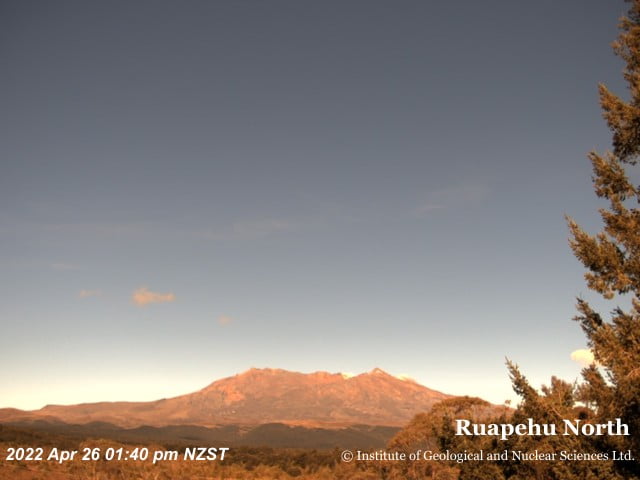
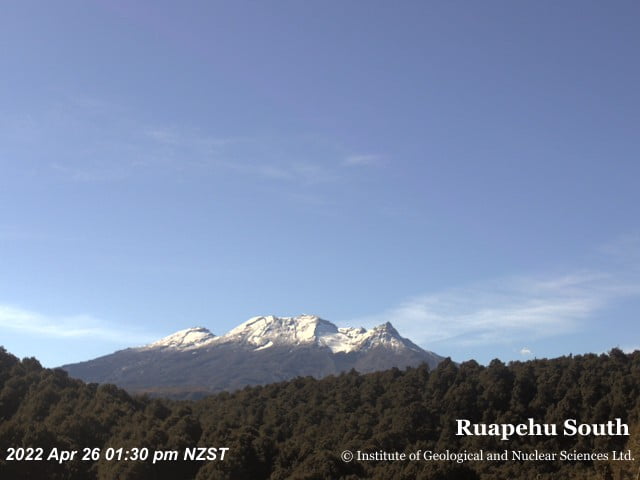
“If eruptive activity does follow this unrest, it is expected to be initially small-scale. Such an eruption would impact mostly the summit area, with also lahars further downstream – like the September 2007 eruption or the slightly larger April 1975 or June 1969 events. Only if eruptions continued would we expect to see larger, ash eruptions developing with substantial impact further afield outside the Tongariro National Park.”
“The chances of a prolonged eruptive episode or a larger eruption, such as occurred in 1995-96 with wider ashfall impacts, is higher than it was two months ago, but remains very unlikely.
“Such an eruption would most likely only follow a sequence of smaller eruptions.”
The interpretation of this activity is consistent with elevated volcanic unrest at the heightened level and therefore the Volcanic Alert Level remains at Level 2 and the Aviation Color Code at Yellow.
“Ruapehu is an active volcano and has the potential to erupt with little or no warning when in a state of elevated volcanic unrest,” Sherburn concludes.
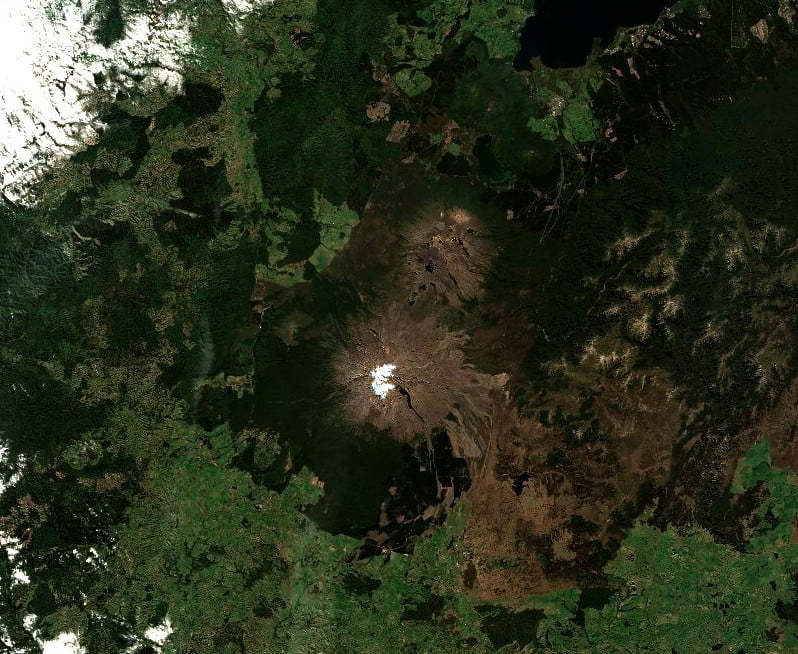
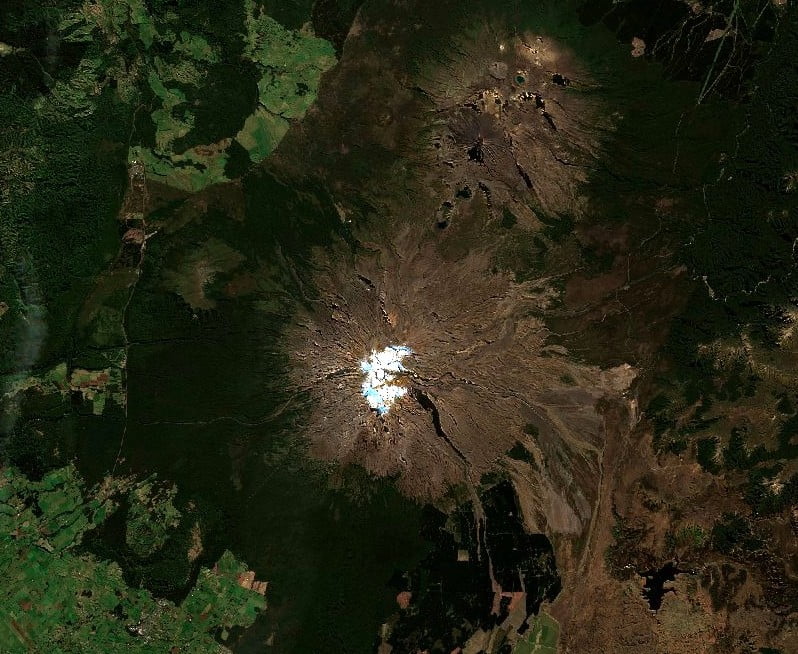
Geological summary
Ruapehu, one of New Zealand’s most active volcanoes, is a complex stratovolcano constructed during at least four cone-building episodes dating back to about 200 000 years ago.
The 110 km3 (26.4 mi3) dominantly andesitic volcanic massif is elongated in a NNE-SSW direction and surrounded by another 100 km3 (24 mi3) ring plain of volcaniclastic debris, including the Murimoto debris-avalanche deposit on the NW flank.
A series of subplinian eruptions took place between about 22 600 and 10 000 years ago, but pyroclastic flows have been infrequent. A single historically active vent, Crater Lake, is located in the broad summit region, but at least five other vents on the summit and flank have been active during the Holocene.
Frequent mild-to-moderate explosive eruptions have occurred in historical time from the Crater Lake vent, and tephra characteristics suggest that the crater lake may have formed as early as 3 000 years ago. Lahars produced by phreatic eruptions from the summit crater lake are a hazard to a ski area on the upper flanks and to lower river valleys.2
References:
1 Mt Ruapehu strong volcanic tremor continues. Volcanic Alert Level remains at Level 2 – GeoNet – April 26, 2022
2 Ruapehu – Geological summary – GVP
Featured image credit: GNS

Commenting rules and guidelines
We value the thoughts and opinions of our readers and welcome healthy discussions on our website. In order to maintain a respectful and positive community, we ask that all commenters follow these rules.